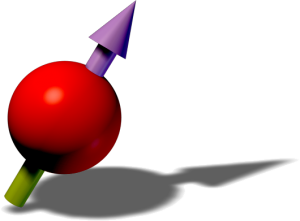by R. Vexiau, N. Bouloufa, M. Aymar, J. G. Danzl, M. J. Mark, H. C. Nägerl, O. Dulieu
Abstract:
The present paper aims at finding optimal parameters for trapping of Cs2molecules in optical lattices, with the perspective of creating a quantum degenerate gasof ground-state molecules. We have calculated dynamic polarizabilities of Cs2molecules subject to an oscillating electric field, using accurate potential curves andelectronic transition dipole moments. We show that for some particular wavelengths of theoptical lattice, called “magic wavelengths”, the polarizability of the ground-statemolecules is equal to the one of a Feshbach molecule. As the creation of the sample ofground-state molecules relies on an adiabatic population transfer from weakly-boundmolecules created on a Feshbach resonance, such a coincidence ensures that both theinitial and final states are favorably trapped by the lattice light, allowing optimizedtransfer in agreement with the experimental observation.
Reference:
Optimal trapping wavelengths of Cs2 molecules in an optical lattice,
R. Vexiau, N. Bouloufa, M. Aymar, J. G. Danzl, M. J. Mark, H. C. Nägerl, O. Dulieu,
The European Physical Journal D, 65, 243-250, 2011.
R. Vexiau, N. Bouloufa, M. Aymar, J. G. Danzl, M. J. Mark, H. C. Nägerl, O. Dulieu,
The European Physical Journal D, 65, 243-250, 2011.
Bibtex Entry:
@Article{Vexiau2011,
author={Vexiau, R. and Bouloufa, N. and Aymar, M. and Danzl, J. G. and Mark, M. J. and N{"a}gerl, H. C. and Dulieu, O.},
title={Optimal trapping wavelengths of Cs2 molecules in an optical lattice},
journal={The European Physical Journal D},
year={2011},
month={Nov},
day={01},
volume={65},
number={1},
pages={243-250},
abstract={The present paper aims at finding optimal parameters for trapping of Cs2molecules in optical lattices, with the perspective of creating a quantum degenerate gasof ground-state molecules. We have calculated dynamic polarizabilities of Cs2molecules subject to an oscillating electric field, using accurate potential curves andelectronic transition dipole moments. We show that for some particular wavelengths of theoptical lattice, called ``magic wavelengths'', the polarizability of the ground-statemolecules is equal to the one of a Feshbach molecule. As the creation of the sample ofground-state molecules relies on an adiabatic population transfer from weakly-boundmolecules created on a Feshbach resonance, such a coincidence ensures that both theinitial and final states are favorably trapped by the lattice light, allowing optimizedtransfer in agreement with the experimental observation.},
issn={1434-6079},
doi={10.1140/epjd/e2011-20085-4},
arxiv = {https://arxiv.org/abs/1102.1793},
url={https://doi.org/10.1140/epjd/e2011-20085-4}
}
